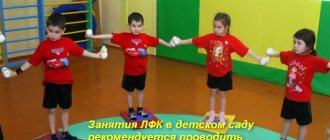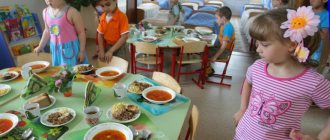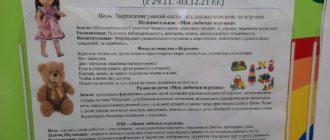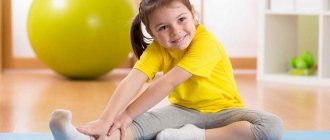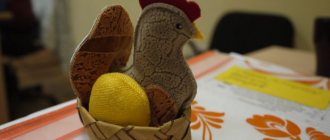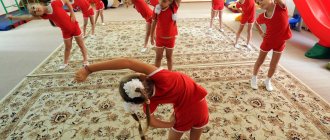Lenara Yakhina
Organization and methodology of morning reception
Organization and methodology of morning reception.
Goal: Gradual entry of the child into the life of the kindergarten, creating a calm psychological comfortable mood in each child, strengthening the intimate and personal contact of the teacher with each child.
Tasks:
1. Formation of friendly relationships between children, creation of an atmosphere of support and cooperation between children and adults, creation of a general positive emotional background, a feeling of psychological comfort.
2. Communication with children.
3. Give children the opportunity to speak out and listen to each other.
4. Give new information.
5. Solving some educational problems (expanding children's ideas, developing speech, logical thinking, and so on.)
6. Organization of planning of children's activities.
Methodology:
I come to the group in advance and ventilate the room . I greet children and their parents warmly. I create a good mood for both the child and his parents. I ask the parents about the child’s health status. I pay attention to the appearance of children. Having noticed problems, I invite the child to put himself in order, and help him if necessary. I teach children to use a mirror, check their appearance , correct flaws in clothing and hairstyle, developing the habit of always being neat and clean. Children who come should say hello, speak quietly and not shout. If someone forgets about this, I remind you. I make sure that all children find interesting activities and do not interfere with other children. If a child cannot choose an activity on his own, I help him: I connect him with playing children, help in choosing toys, or give the child some specific assignment. I create conditions for varied and interesting activities for children in the group. I suggest playing the board game (based on valeology)
“Helpful - Harmful”
.
Printed board game “Helpful - Harmful”
.
Strengthen children's knowledge about the benefits and harms of certain products
Material: Large cards with the image of a cheerful man; a set of cards depicting foods that are healthy and harmful to human health.
"Morning filter" in preschool educational institution
“Morning filter for children in preschool educational institutions”
Resolution of the Chief State Sanitary Doctor of the Russian Federation dated May 15, 2013 N 26 approved the sanitary and epidemiological requirements for the structure, content and organization of the operating mode of preschool educational organizations" (SanPiN 2.4.1.3049-13. Sanitary and epidemiological rules and regulations...")
These rules and regulations are aimed at protecting the health of children when carrying out activities for their upbringing, training, development and health improvement in preschool organizations and establish sanitary and epidemiological requirements for the conditions of placement of preschool institutions, equipment and maintenance of the territory, catering, etc.
The daily morning reception of preschoolers is conducted by teachers who interview parents about the state of health of the children.
According to indications, the nurse examines the pharynx, skin and measures the child’s body temperature. Admission of children to the nursery group is carried out by a person with a medical education. The pharynx and skin are examined daily, and the temperature is measured. Patients and children with suspected illness identified during the morning filter are not admitted to the preschool educational institution; sick people identified during the day are isolated.
Depending on the condition, the child is isolated until the parents arrive or is hospitalized.
Once a week, a health worker examines children for head lice.
The inspection results are recorded in a special journal. If children are found affected by head lice, they are sent home (for treatment).
In order to stop the spread of various diseases during the morning admission of children to a preschool institution, kindergarten workers constantly conduct a thorough morning “filtering” (medical examination). The seasonal rise of various diseases in children occurs very often, there are many reasons for this. In this regard, in all children's institutions this issue has been under constant control for a number of years by the heads of kindergartens, namely, the mandatory and thorough implementation of the so-called “morning filter” by employees.
Before the start of the day, a medical worker or teacher carefully examines each student and always measures his temperature.
“Morning filter” is carried out in the presence of parents (legal representatives). Data about the child’s condition (temperature, condition of the skin, pharynx) are entered into a special notebook, in which parents also sign if they agree with the results of the examination of their children.
To prevent the spread of colds, intestinal and other diseases, our kindergarten constantly ensures that children arrive healthy, and those who show symptoms of illness are sent home.
After suffering from an illness, as well as absence for more than 5 days, children are admitted to a preschool educational institution only if they have a certificate from a local pediatrician indicating the diagnosis and duration of the disease.
Dear parents, we kindly ask you to be understanding about the daily “morning filter” procedure and be sure to be present when the child is examined.
Under no circumstances should you send your child to kindergarten alone!
The life and health of our children are in our hands!
GCD. Morning reception of children in the first junior group. lesson plan (junior group) on the topic
- Hello. Hello, …..How are you doing? How is Danis feeling? Don't forget to sign the report card. Goodbye.
Hello Adeline, what a beautiful dress you have!
Hello Eldan, how are you? Good? Great!
Children are given board games: large mosaics, puzzles, lacing, cubes.
Guys, let's go visit our flowers.
In our group on the window, in a green country
Flowers grew in painted pots.
Here is geranium, here is chlorophytum. Here is a planted onion.
We will water them early: me and all my friends.
…….. I took a watering can and watered all the flowers. Let the little flowers drink some water. I wiped the leaves with a soft cloth. ………The dust prevents me from breathing, it closes the pores. A geranium bloomed on the window so early. Round leaves, lush flowers. Even very good - that’s what the kids decided.
Children water flowers and planted onions. With the help of the teacher, wipe the leaves from dust.
After work, praise the children.
Musical game "Carousel"
Әылә-лә, Әйлә-лә, carousel әыләнә.
Matur kurchak әylәnә, matur ayu әylәnә,
Matur kuyan әılәnә.
The teacher has a toy butterfly in his hands. When the teacher says: “Day. Butterflies are flying,” the children wave their arms and dance, and when the teacher says: “Night. Butterflies go to bed,” the children squat down and close their eyes.
“The chicken went out for a walk”
The chicken went out for a walk, (They walk with two fingers - the index and middle - of each hand.)
Pinch fresh grass (Pinching movements with all fingers of each hand.)
And the kids follow her - (Run with all the fingers of both hands.)
Yellow chickens. (Clap their hands.)
“Ko-ko-ko, ko-ko-ko, (They shake the finger of the leading hand.)
Don't go far
Row with your paws, (Rowing movements with each finger of both hands at the same time, the thumbs fix the palms at the edge of the table.)
Look for grains." (Children collect grains alternately with two fingers of each hand or both hands at the same time: thumb - index, thumb - middle, etc.)
"Wheat pies"
We bake excellent wheat pies (first one hand on top, then the other)
Who will come to us to try wheat pies? (raise their shoulders up, spread their arms to the sides)
Mom, dad, brother, sister, shaggy dog from the yard. (bend the fingers on the hand, starting with the little finger)
And others, everyone who can, let them come with them too. (“they call with their hands, they stretch their arms forward”)
We put wheat pies in the oven. (press palms loosely against each other, extend straight palms forward)
The stove burns merrily (they quickly move their fingers, raising and lowering their hands)
Our mother says: (put their hands in a “shelf”)
- The crumbs that remain will go to the sparrow. (“crumb crumbs”, tap their index fingers on their knees).
Preparatory group in kindergarten
Today, many parents underestimate the importance of kindergarten in the development of a child’s multifaceted personality. But it is here, among the children’s group, that the child learns to perceive the world around him through his own children’s eyes, and not through the prism of his parents. In kindergarten, children take their first steps of independence and self-discipline, learn to adapt to routines, get used to a certain rhythm of life, and, of course, acquire all the necessary skills for school. This is especially true for the preparatory group in kindergarten, so let's take a closer look at what awaits your little one in this group.
Regime moments in the preparatory group
As already mentioned, in the preparatory group children get used to a certain daily routine, which is carried out every day strictly according to the schedule:
- reception of children, independent activities;
- morning exercises;
- breakfast;
- games, independent activities;
- classes;
- walk;
- return from a walk, lunch;
- daytime nap;
- gradual rise, water procedures;
- afternoon snack;
- games, independent activities;
- walk;
- return from a walk, dinner;
- going home.
Tasks of education and development of children in the preparatory group of kindergarten
Classes with children of senior preschool age are primarily aimed at developing the abilities that they will need when entering school. As a rule, children are raised and educated through games. Thus, play activities in the preparatory group of a kindergarten are defined as a type of educational activities that are carried out with the aim of developing certain skills in children, as well as friendly relations in the team.
One of the main tasks in the preparatory group is teaching children their native language, literacy, as well as the development of speech and verbal communication. In classes, preschoolers are taught to delve into and understand the teacher’s speech, reflect their acquired knowledge in speech, highlight the characteristics of objects, and also group objects according to common characteristics. In addition, in the preparatory group of kindergarten, children learn reading, writing, counting, and also train memory, logic and attention. It is worth noting the importance of these classes, since the further development of the child’s speech culture will be based only on what was laid down in preschool age.
An important role in the preschool development of a child is played by physical education leisure, which is also given enough time in the preparatory group. In the process of physical training, children’s motor experience is accumulated and enriched, physical qualities such as strength, speed, flexibility, endurance, dexterity, and coordination of movements are developed. During preschool physical training, it is important to form in the child a conscious need for physical activity, as well as for physical improvement.
In the preparatory group, special attention is paid to circle work. Children are engaged in artistic, productive, musical activities, work with paper, plasticine, salt dough or other natural materials. All this and much more contributes to the development of creative abilities, as well as the mental qualities of the child.
One of the many factors in the development of children, of course, is a preschool institution. However, we should not forget that the process of a child acquiring new knowledge cannot do without the active participation of parents, because the teacher will not be able to correct the child’s behavior without knowing the characteristics of his behavior in the family. Therefore, working with parents in the preparatory group is an important factor in the effective upbringing of a child.
Of course, in the preparatory group, children will not only have classes, but also fun walks and entertainment.
“Methodological recommendations for organizing morning reception of children in a group”
MUNICIPAL BUDGETARY PRESCHOOL EDUCATIONAL INSTITUTION KINDERGARTEN No. 7 MO UST-LABINSKY DISTRICT
| Author of the methodological development: Senior teacher MBDOU No. 7 Melnikova Galina Aleksandrovna |
Art. Ladoga
2018
RECOMMENDATIONS for the teacher
on organizing morning reception of children in a group:
*
In good weather, take children outdoors at any time of the year.
*
Greet each child, say kind words and invite them to join the group with the other children.
*
During the morning reception of children, pay attention to all parents. Ask how their child is feeling and what his mood is. Do not use this time to counsel parents.
*
Involve children in joint activities with peers, use surprise moments. Don't insist if your child wants to stay away for a while. Give him privacy.
*
Be more attentive to the appearance of children, their emotional mood when they come to the group. If necessary, help children put themselves in order, teach them to use a mirror, check their appearance and correct flaws in their hairstyle and clothing.
*
Watch your speech when receiving children. Show genuine interest in each child's mood.
*Think in advance about how to organize your children’s activities and how to keep them occupied during the period from reception to preparation for breakfast. Conduct conversations, finger exercises, offer children didactic, active, sedentary, board and printed games, prepare toys in advance, you can organize work and individual activities. Encourage games that arise on the initiative of the children themselves.
*
Create a positive emotional atmosphere in the group when receiving children. This will help set them up for future activities.
*
Pay special attention to hygiene procedures before breakfast. Organize children's washing in subgroups. Remind them of washroom etiquette.
*
While preparing children for breakfast, stay close to them. All preparatory procedures should be carried out in a calm, friendly environment.
*
Organize children's duty taking into account their age (assignments, starting from the second youngest group, and table setting - in older preschool groups). Make sure that different children are on duty on a schedule. Don't forget to thank those on duty with the other children for their help in preparing for breakfast.
Source:
https://e.stvospitatel.ru/article.aspx?aid=673467
Used Books:
Directory of a senior teacher of a preschool institution No. 10 September 2022.
CORRECT DAILY ROUTINE FOR CHILDREN
The correct daily routine and its timely organization is the key to the child’s health, his easy adaptation to kindergarten and, subsequently, to school. In addition, the daily routine is the basis of education.
A number of changes are constantly occurring in the body of a 1-3 year old child; for these reasons, it is advisable to change the daily routine. In the period from one to three years, the daily routine changes three times. It is important for parents to know that all recommendations are not strict and there are no standards. And the child’s routine must coincide with the child’s needs. It is impossible to abruptly transfer your baby from one daily routine to another. This can provoke negative emotions in the child, the baby will become capricious, due to lack of sleep, frequent mood swings occur, absent-mindedness develops, and various problems with the baby’s health are possible.
Daily routine for a baby 1-1.5 years old
In the second year of life, various changes occur in the baby’s body; children get tired quickly, but they do a lot of useful and important things during the day. Children begin to walk actively, use a spoon, begin to pronounce simple words, and their vocabulary is constantly expanding. All these actions require large energy expenditures.
Babies may nap once or twice a day. The first sleep can be 2–2.5 hours, the second sleep - a little less (about 2 hours). But most often, babies sleep once during the day for about 3-4 hours. Before going to bed, you need to wash it at least half an hour before going to bed. In order for the baby to sleep well, he must be put to bed at approximately the same time for daytime and nighttime sleep. This will help form a certain reflex.
In the summer, the baby should sleep in the fresh air. It is permissible to sleep on the street, on the veranda, if the temperature allows. If this is not possible, then the baby needs to sleep at least with the vent or window open.
Also, in the warm season, when there is more daylight, the child’s naps during the day should be a little longer, but the baby should be put to bed at night a little later.
It is necessary to feed the baby 4 times a day with a break of 3.5-4 hours. The baby's daily routine should be structured so that after feeding there is a period of wakefulness, active games, walks, activities, after which sleep is necessary until the next feeding. It is this daily routine that will ensure the normal condition of the baby. The duration of periods of wakefulness between sleep should be 4.5-5 hours. Shortening sleep time or lengthening wake time is unacceptable, as this can lead to mood swings, the baby will not be able to fall asleep immediately, and his nervous system will be too excited.
During the active period, the child can go about his business, namely, explore the world around him. The baby needs to be occupied with walks, games or educational activities.
Walking with your child is very important. Walks should be taken twice a day. It is advisable to walk after lunch and before dinner, and the walking time should be at least an hour. In winter, this can be 1.5 hours, but depending on the temperature outside in the warm season, walks can be safely increased to 2 hours.
No less important are hygiene procedures, which should be carried out 2-3 times a week and always before bedtime. A bath relaxes babies and helps them fall asleep easier. During water procedures, children need to instill their first hygiene skills. These skills include hand washing, washing your face, etc. Also, from this age, the baby must be taught to sit on the potty and sit next to him until the result is achieved.
Approximate daily routine for a child 1–1.5 years old
Morning rise should be at 7.30-8.00.
After waking up, morning bath procedures are necessary.
Breakfast - 7.30-8.00.
Wakefulness should take place after breakfast and before lunch.
Some children may want to go to bed as early as 10.00-10.30.
After waking up, between 12.00 and 15.30, you need to have lunch and be sure to take a walk with your baby.
After a walk, babies should go to bed, and if the baby sleeps once a day, then preference is given to an afternoon nap.
After waking up at 17.00, an afternoon snack and a walk follow, the child stays awake until bedtime.
Before going to bed at night, the baby must be bathed at 19.30.
It is necessary to feed the baby at 20.00.
The baby should fall asleep at 20.30-21.00.
Daily routine for children aged 1.5 to 2 years
At this age, children have even more necessary things to do, children stand in pyramids of cubes, participate in the process of dressing, and are especially fond of fastenings on shoes. Babies can already drink on their own, while holding a mug or sippy cup in their own hands. They use what they see or hear in their games; they can feed their favorite toy or try to comb it. Upon reaching 1.5 years, even those babies who slept 2 times a day switch to a regime with one nap during the day. The duration of such sleep is 3–3.5–4 hours. Night sleep accounts for 10–11 hours. It turns out that in total, babies sleep 13–14.5 hours a day.
The child’s diet also remains 4 times a day with intervals between feedings of 3.5–4.5 hours. The interval between feedings when the baby is awake should not be more than 3.5 hours.
The toddler is active during wakefulness, engaged in important and active games, the body quickly uses up its energy reserves.
After waking up in the morning, the child should have breakfast no later than an hour later. The same rule must be followed before bedtime (dinner should be no more than an hour before bedtime. Such simple rules will ensure the child has a good, active morning and a good night’s sleep.
Further, the periods between sleep increases and should be 5–5.5 hours. Kids also devote all their free time to games. It is important for parents to remember about active and educational games with their baby.
Children at this age enjoy using various shovels, buckets, and collecting sand cakes. For these reasons, the number of walks with the child remains the same - 2 times, but the order of the walks changes slightly. You can walk with your baby either after breakfast or before lunch, and when you come home, you need to eat and go to bed.
The second walk should be after afternoon tea. The duration of the walk remains the same as for children 1–1.5 years old, but it is permissible to increase the walk by no more than 20 minutes. By the age of two, children should already ask to go to the potty on their own, but this is not a strict rule. There are situations when kids are passionate about playing and cannot always make their parents understand their needs. It is important for parents to know this and not panic when this happens to their child. Mothers should offer the baby to sit on the potty, thereby reminding and distracting him from the game. Be sure to put your baby on the potty after and before bedtime.
Approximate daily routine for children 1.5–2 years old
The baby should wake up at 7.30, as mentioned earlier. Breakfast should be at least an hour later. The optimal time for breakfast is 8.00. Breakfast is followed by a period of wakefulness; during this period you can take a walk or keep your child busy with a useful and interesting game.
At 12 o'clock you need to have lunch with the baby and from 12.30 to 15.30 the baby should sleep.
After waking up, there is an afternoon snack and a walk. In the winter season, a walk can be replaced with family communication at home, and you can take a walk with your baby when it is light, i.e. after lunch.
Upon returning from a walk at 18.30, the baby must be bathed.
At 19.30 the baby should have dinner and only then a night’s sleep.
The toddler should sleep from 20.30 to 7.30.
Daily routine for a child from 2 to 3 years old
This age period is especially important in the development of a child, as the child’s independence and creative nature are being formed. Kids are already starting to speak in sentences, often repeating everything they hear around them. The child's speech gradually approaches the speech of an adult.
Toddlers can independently put on and take off socks, a shirt or a T-shirt, and independently ask to go to the potty, indicating what actions the baby intends to perform.
During this period of time, babies may refuse daytime sleep altogether, but it is important for parents to replace this period with quiet games or other activities, for example, looking at a book or watching cartoons. Such quiet periods in the daily routine will help relax the child’s nervous system and prevent overwork. If babies sleep during the day, then, as a rule, it is an afternoon nap.
The periods of wakefulness continue to increase and amount to 6–6.5 hours. For babies who lead a very active lifestyle or for children who are weakened, periods of wakefulness can be reduced by about an hour. Periods of wakefulness should consist of a series of active and passive activities; this is the rule that will prevent overwork of the child’s nervous system, since babies are still quickly excitable and can quickly get tired of the same type of activity.
Walking with your baby may increase in the summer. If in winter, depending on weather conditions, walks should not exceed 1.5 hours, since the baby can quickly freeze, then in the warm season, almost all waking hours and even daytime sleep can be moved outside.
Children 2–3 years old have already developed a strong understanding of the potty, but it is too early for parents to relax; they still need to sit the baby down and offer to go to the toilet, especially on the street when the baby is playing.
At this age, it is important to consolidate the child’s skills; for this it is necessary to praise the baby and reinforce this with constant repetitions.
Approximate regimen for children 2–3 years old
Wake up - 7.30
Breakfast - 8.00
After breakfast there is a period of wakefulness, until 12 you can take a walk with your baby or engage in useful games or activities.
Lunch - 12.30
Sleep - 13.00-15.30
After sleep, there is an afternoon snack at 16.00 and a walk or exercise until 19.00. Dinner - 19.30
It is necessary to bathe your baby just before bedtime.
Night sleep - 20.30-7.30
It is important for parents to understand that unobtrusively following a daily routine will allow your child to grow up healthy and organized, and will help prepare for attending kindergarten.
Pediatrician
children's clinic
Drozdova T.V.
